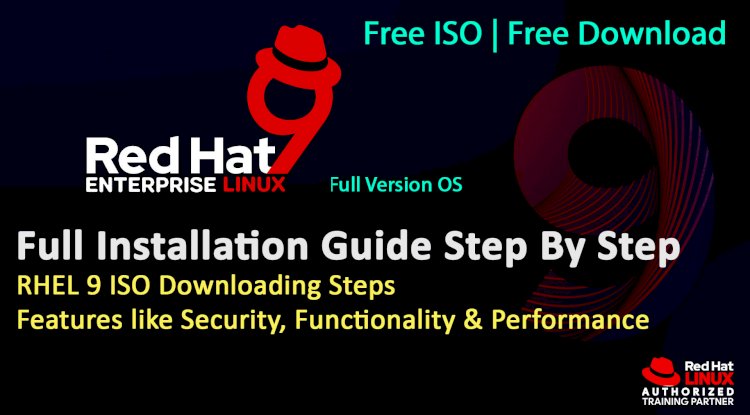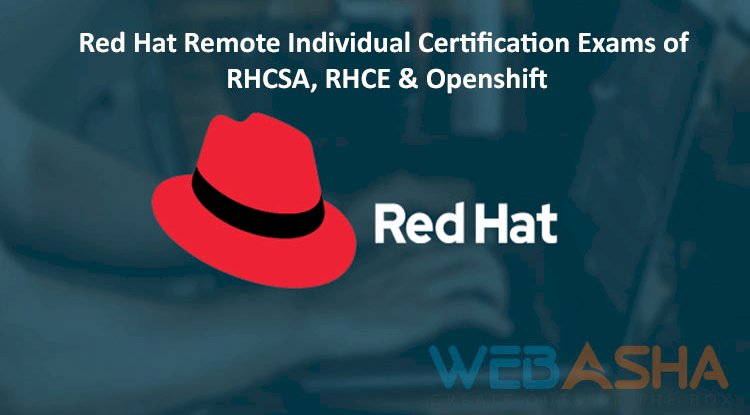The Future of Desktop Operating Systems | AI, Cloud Computing, Security, and Cross-Platform Integration
The future of desktop operating systems is evolving with advancements in AI, cloud computing, enhanced security, and cross-platform compatibility. Traditional operating systems like Windows, macOS, and Linux are integrating AI-powered automation, cloud-based functionality, and Zero Trust security models to enhance performance and security. Open-source OS adoption is increasing, virtualization is improving system efficiency, and privacy-focused developments are gaining traction. As AI continues to revolutionize OS functionalities, we can expect more self-healing systems, automated updates, and seamless multi-device experiences. However, challenges such as hardware compatibility, privacy concerns, and cybersecurity threats must be addressed. This blog explores these trends, innovations, and future expectations for desktop operating systems.

Table of Contents
- Introduction
- Key Trends Shaping the Future of Desktop Operating Systems
- The Role of AI in Future Desktop Operating Systems
- The Challenges in Developing Future Operating Systems
- Comparison of Future Trends in Desktop OS
- Conclusion
- Frequently Asked Questions (FAQs)
Introduction
The world of desktop operating systems (OS) is evolving rapidly, driven by advancements in artificial intelligence (AI), cloud computing, security enhancements, and user experience improvements. From traditional operating systems like Windows, macOS, and Linux to emerging cloud-based and AI-powered alternatives, the future of desktop OS is expected to bring greater automation, security, and flexibility.
This blog explores the future trends in desktop operating systems, the role of AI and cloud computing, security enhancements, and the potential challenges that OS developers will face in the coming years.
Key Trends Shaping the Future of Desktop Operating Systems
AI-Powered Operating Systems
Artificial intelligence is playing a major role in the automation and personalization of operating systems. Future OS versions will feature AI-driven assistants, real-time performance optimizations, and predictive maintenance.
Example: Windows 11 already integrates AI-based features like Copilot, while macOS includes Siri for better productivity and assistance.
Future Possibilities: AI will enhance resource management, security, and user customization, making desktops more efficient and intelligent.
Cloud-Based Operating Systems
Cloud computing is reshaping how operating systems function, leading to lightweight, internet-based OS environments that do not require heavy local storage.
Example: Google Chrome OS is a cloud-based operating system that relies on web applications instead of traditional software.
Future Possibilities: Windows and Linux distributions may move towards hybrid cloud solutions, where the OS functions partially online, reducing the need for high-end local hardware.
Enhanced Security and Privacy Controls
Cybersecurity threats are increasing, prompting OS developers to implement stronger security protocols to protect user data and systems.
Security Enhancements:
- Zero Trust Architecture (ZTA) where strict access control mechanisms are applied
- End-to-End Encryption built into operating systems for better data protection
- AI-Based Threat Detection to automatically identify and prevent malware, phishing, and ransomware attacks
Example: Apple’s macOS Ventura has Lockdown Mode, which enhances security for high-risk users.
Greater Cross-Platform Compatibility
The future of OS will focus on seamless integration across multiple devices, allowing users to work effortlessly across desktops, smartphones, and tablets.
Example: Microsoft’s Your Phone app allows Windows users to integrate their smartphones with their desktops.
Future Possibilities: Operating systems will become more device-agnostic, supporting unified applications across all platforms.
Open-Source and Customizable Operating Systems
Linux has always been the leader in open-source desktop OS development, but other operating systems are also embracing customization and flexibility.
Example: Ubuntu, Fedora, and Arch Linux allow deep customization, making them attractive to developers and security professionals.
Future Possibilities: More proprietary OS vendors may allow modular customization to cater to different industries and user needs.
Virtualization and Containerization
Virtualization technologies are revolutionizing OS design by enabling multiple OS environments on a single device.
Example:
- WSL (Windows Subsystem for Linux) allows users to run Linux alongside Windows.
- VMware and VirtualBox enable running multiple OS instances on a single machine.
Future Possibilities:
- Cloud-based virtual desktops will replace traditional OS installations.
- Lightweight container-based OS environments will become more mainstream.
The Role of AI in Future Desktop Operating Systems
AI is set to redefine how users interact with operating systems by improving:
- Automated Performance Management – AI will optimize CPU, RAM, and power consumption in real-time.
- Advanced Voice and Gesture Control – Users may control their desktops using voice or gestures.
- Smart Troubleshooting and Support – OS will have self-healing capabilities to detect and resolve issues without user intervention.
The Challenges in Developing Future Operating Systems
While the future looks promising, several challenges need to be addressed:
- Security Concerns: The more connected an OS is, the more vulnerable it becomes to cyberattacks.
- Hardware Compatibility: New OS innovations must remain backward-compatible with older hardware.
- Privacy Issues: AI-powered OS systems must maintain strict data privacy regulations.
- User Adaptation: People may find it difficult to adapt to new OS paradigms if changes are too rapid.
Comparison of Future Trends in Desktop OS
| Feature | Current OS (Windows, macOS, Linux) | Future OS Trends |
|---|---|---|
| AI Integration | Limited to assistants like Cortana & Siri | Deep AI-driven automation & optimization |
| Security | Traditional antivirus & firewalls | AI-based cybersecurity with Zero Trust policies |
| Cloud Integration | Partial cloud support | Full cloud-based OS experience |
| Cross-Platform Support | Limited compatibility | Unified experience across devices |
| Open-Source Expansion | Mostly Linux | More proprietary OS vendors may offer open-source options |
| Virtualization & Containers | Used for dev/test environments | Mainstream cloud-based OS deployments |
Conclusion
The future of desktop operating systems will be defined by AI-driven automation, cloud-based computing, enhanced security, and seamless cross-platform compatibility. While challenges remain, innovation in OS technology will lead to more efficient, flexible, and secure desktop environments. Users can expect a shift towards intelligent, cloud-connected, and privacy-focused operating systems in the coming years.
Frequently Asked Questions (FAQ)
What is the future of desktop operating systems?
The future of desktop operating systems lies in AI-powered automation, cloud integration, improved security, and seamless multi-device compatibility.
How will AI impact desktop operating systems?
AI will optimize performance, automate security, enhance personalization, and provide predictive troubleshooting in future operating systems.
What are cloud-based operating systems?
Cloud-based OS relies on internet connectivity and cloud storage instead of local storage, reducing system dependency on hardware.
Will Windows and macOS become cloud-based?
Both Windows and macOS are incorporating cloud features, but a fully cloud-based OS model may take time for mainstream adoption.
How does AI improve security in desktop operating systems?
AI enhances security by detecting and mitigating cyber threats, automating security updates, and monitoring unusual system behavior.
What is Zero Trust security in operating systems?
Zero Trust security means verifying every user and device before granting access, reducing unauthorized intrusions.
Will Linux continue to dominate the open-source OS market?
Yes, Linux is expected to remain a leading open-source OS due to its flexibility, security, and strong developer community.
How will cross-platform compatibility evolve in future OS?
Future OS will offer seamless integration across desktops, smartphones, tablets, and IoT devices.
What role will virtualization play in future operating systems?
Virtualization will allow multiple OS environments on a single device, improving system efficiency and security.
How is Windows evolving with AI and automation?
Windows is integrating Copilot AI, automatic performance optimizations, and AI-driven security enhancements.
Will macOS become more customizable in the future?
Apple may introduce more customization options, but macOS will likely remain a closed ecosystem.
What are the major security challenges for future desktop OS?
Security threats include ransomware, AI-powered cyberattacks, software vulnerabilities, and privacy concerns.
Can open-source OS like Linux compete with Windows and macOS?
Yes, Linux is growing in adoption due to security, customization, and cost-effectiveness, especially in enterprise environments.
How will future OS updates be managed?
AI will automate OS updates, making them faster, seamless, and less disruptive for users.
What is the role of machine learning in operating systems?
Machine learning helps OS in predictive maintenance, personalized user experience, and automated security threat detection.
Will future OS be subscription-based?
Some OS may transition to a subscription-based model, similar to Microsoft’s Windows 365 cloud OS.
What are the benefits of a fully cloud-based OS?
A cloud-based OS reduces hardware dependency, offers faster updates, and enhances remote access capabilities.
How will AI-powered assistants improve OS functionality?
AI assistants will help users navigate systems, troubleshoot issues, automate tasks, and improve efficiency.
What is the impact of cybersecurity threats on future OS?
Cybersecurity threats are pushing OS developers to adopt Zero Trust security, AI-driven monitoring, and enhanced encryption methods.
Will users need high-end hardware for AI-powered OS?
Not necessarily. AI optimization will ensure efficient resource allocation, allowing older hardware to run AI-powered OS smoothly.
How will OS developers handle data privacy concerns?
Future OS will focus on end-to-end encryption, user data transparency, and privacy-focused features.
Are there any risks with cloud-based operating systems?
Yes, risks include data breaches, dependency on internet connectivity, and potential security vulnerabilities in cloud infrastructure.
Will Linux gain more popularity in desktop computing?
With enhanced UI, security improvements, and software compatibility, Linux adoption is expected to increase in desktop environments.
How will future OS balance security and user convenience?
Future OS will use biometric authentication, AI-driven security, and automated updates to ensure both security and usability.
Will operating systems become more modular in the future?
Yes, OS will adopt modular architectures, allowing users to enable or disable features based on their needs.
How will AI enhance the user interface in future OS?
AI will offer dynamic UI adaptations, voice-assisted navigation, and predictive system layouts for better user experience.
What are the major advantages of open-source OS over proprietary OS?
Open-source OS offers customization, enhanced security, lower costs, and a strong developer community.
How will OS licensing change in the future?
Future OS licensing may adopt freemium models, with basic features free and premium services available via subscription.
What innovations can we expect in OS boot times?
Future OS will feature instant boot capabilities using AI-based preloading and optimized SSD performance.
Will operating systems integrate blockchain for security?
Yes, some future OS may integrate blockchain technology for data integrity, secure transactions, and identity verification.
How will AI-driven automation change desktop OS?
AI-driven OS will automate maintenance, enhance security, optimize performance, and provide a smarter user experience.













![Top 10 Ethical Hackers in the World [2025]](https://www.webasha.com/blog/uploads/images/202408/image_100x75_66c2f983c207b.webp)

![[2025] Top 100+ VAPT Interview Questions and Answers](https://www.webasha.com/blog/uploads/images/image_100x75_6512b1e4b64f7.jpg)







